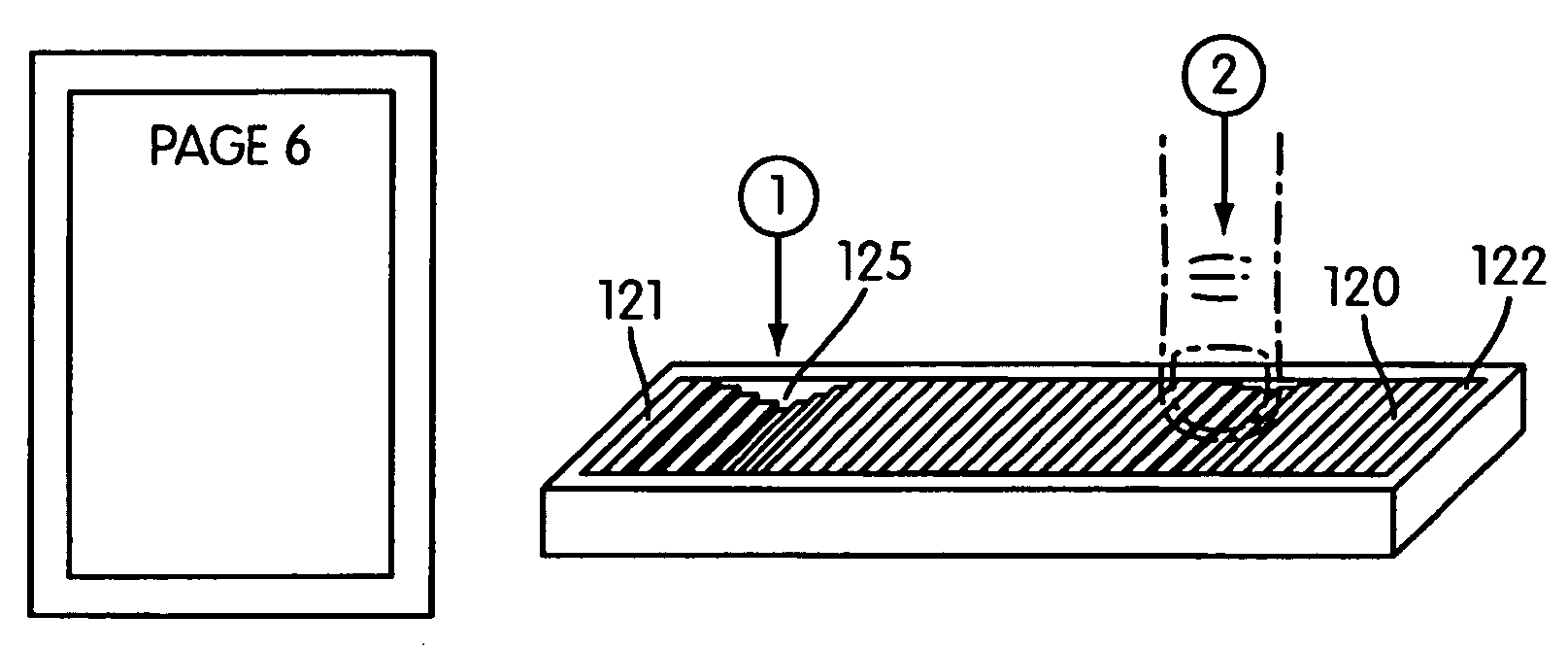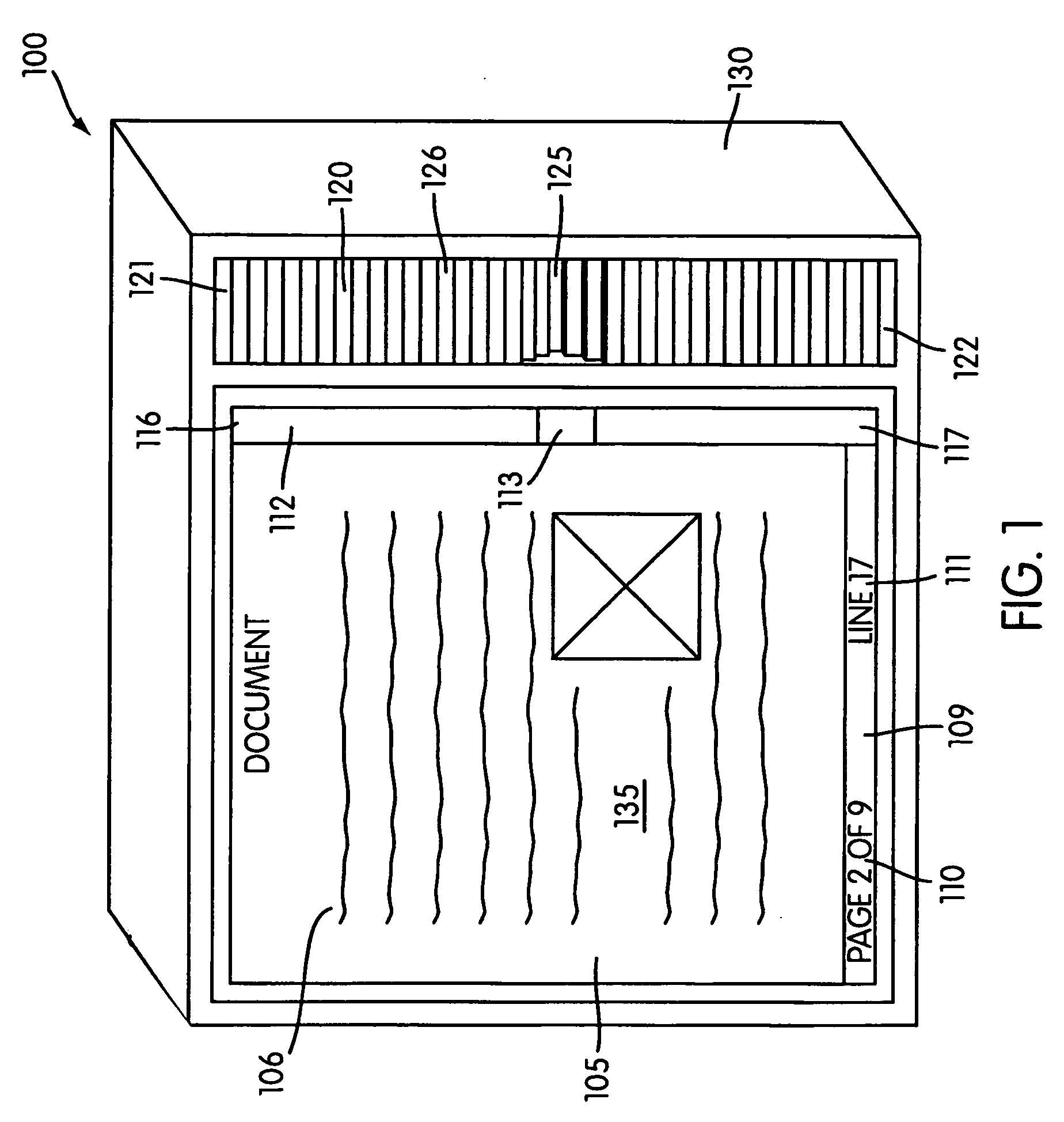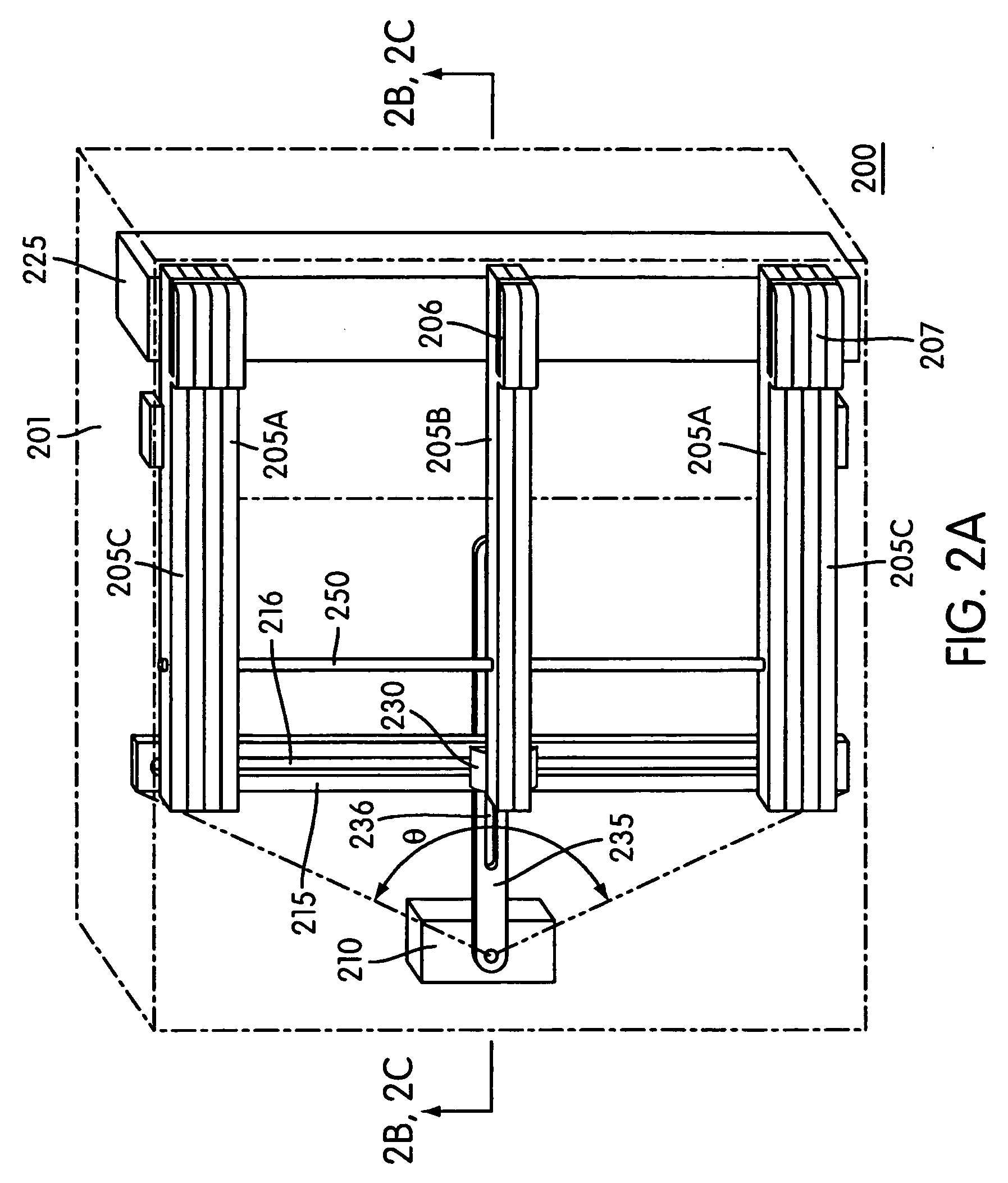Tactile device for scrolling
a scrolling device and scrolling technology, applied in the field of scrolling devices, can solve the problems of inflexible navigation of electronic copies, significant disadvantages of reading and accessing digital documents, and inability to navigate through electronic copies at the same time, so as to facilitate traveling with electronic documents
- Summary
- Abstract
- Description
- Claims
- Application Information
AI Technical Summary
Benefits of technology
Problems solved by technology
Method used
Image
Examples
Embodiment Construction
[0029] Several illustrative embodiments of tactile touch-sensitive scrolling and navigation systems are shown in FIGS. 1-10. These devices are capable of providing signals for manipulating a document, e.g., by scrolling, relative to a display device in one or more directions. While some of the different illustrated embodiments of scrolling systems are shown in isolation, aspects of the invention may also include the use of such touch-sensitive devices as part of a stand-alone input device, or in combination with other devices such as a personal digital assistant (PDA), an electronic tablet, a laptop computer, an internet appliance, an electronic book (E-Book), or on a keyboard or mouse input device. For example, FIG. 1 is an illustrative example of an electronic document viewing device, such as an E-Book device, providing a tactile scrollbar for navigation according to one embodiment of the tactile scrollbar of the present invention. For example, FIG. 8 shows a similar depiction of ...
PUM
 Login to View More
Login to View More Abstract
Description
Claims
Application Information
 Login to View More
Login to View More - R&D
- Intellectual Property
- Life Sciences
- Materials
- Tech Scout
- Unparalleled Data Quality
- Higher Quality Content
- 60% Fewer Hallucinations
Browse by: Latest US Patents, China's latest patents, Technical Efficacy Thesaurus, Application Domain, Technology Topic, Popular Technical Reports.
© 2025 PatSnap. All rights reserved.Legal|Privacy policy|Modern Slavery Act Transparency Statement|Sitemap|About US| Contact US: help@patsnap.com



